'We should be in the same neighbourhoods as the Italians – but we're on the outside'
Some call it the last acceptable form of racism. Roma people are one of the world's most persecuted minorities. Following the demolition of a Naples settlement, Emily Goddard and Alex Sturrock follow the fate of its evicted citizens
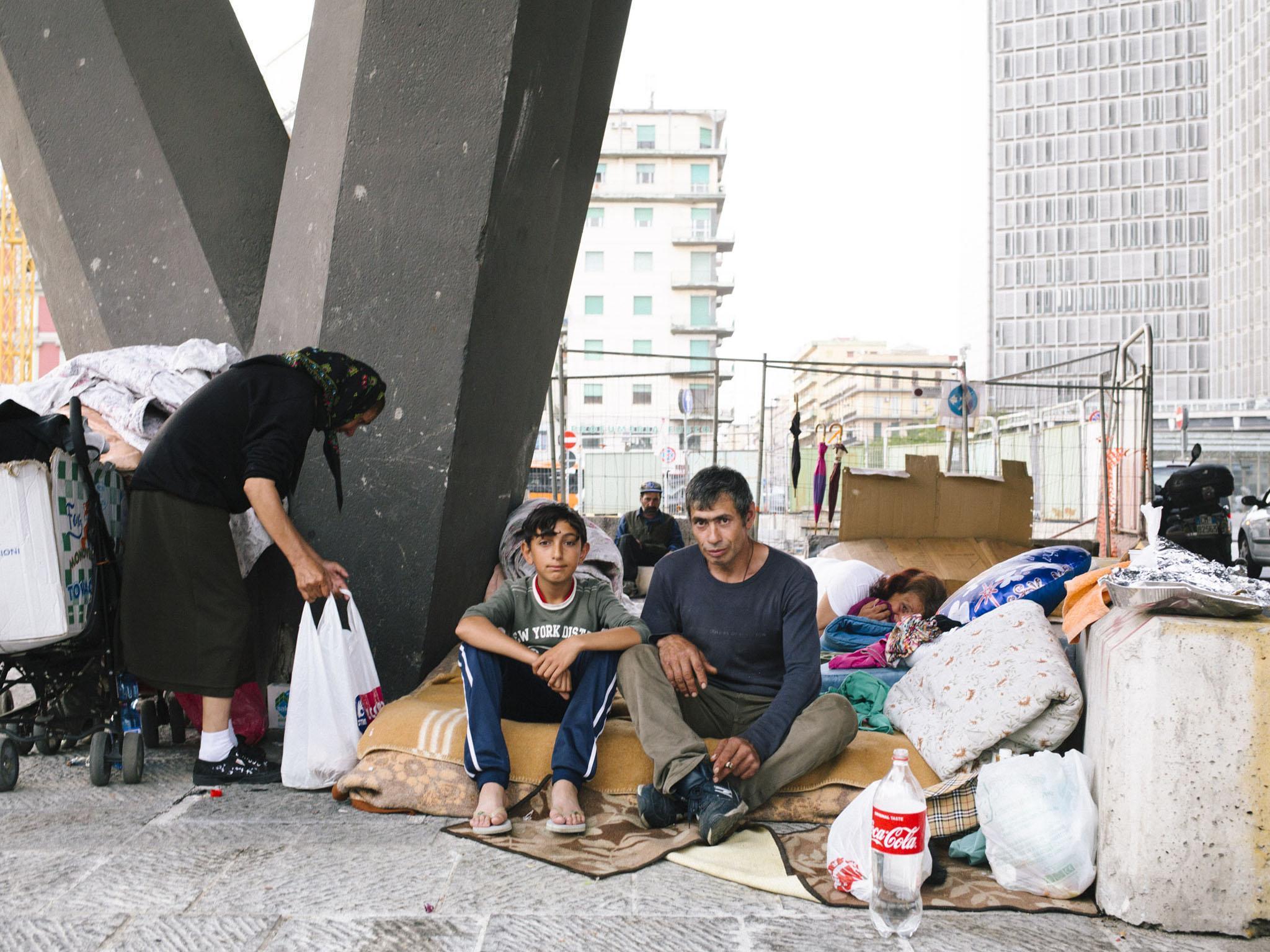
Petrica drives his family around Naples on a balmy June evening, searching for a safe spot to park until the morning. This is not a tourists’ jaunt, nor will he, his wife and 18-month-old daughter be leaving the car overnight – the decade-old Vauxhall Astra has been their only shelter for the past two months.
Tonight, like they have done every night following their forced eviction from an informal Roma settlement in the Italian city, the young family will push flat the seats of their aluminium, four-wheeled home and fill the gaps with clothes and bags to create a small, lumpy bed.
“The baby is often crying at night, which is hard in such a tiny space,” 31-year-old Petrica explains. “When we are all so close it means we cannot sleep easy.”
Since leaving the Gianturco camp, the family has not been able to enjoy a single cooked meal, relying only on cold food for sustenance as they have no access to kitchen facilities, while washing and sanitation is as bad as one can expect from this bleak situation. “It is difficult; it’s not at all like being at home,” Petrica says.
Each evening, after the father and mother have spent the day begging on the street with their young daughter in tow, they return to their car with usually only enough money to buy a loaf of bread and clamber in, hoping to get some rest before they have to travel to the next spot.
They never stay long in one location; always moving on after only a day or two, as they are conscious of the inadequate shield from any trouble the car bestows on them.
“We are two days in one parking place, then two days in another depending on what we find,” Petrica says. “We are in different areas of the city every day. We do not feel safe, not at all. What kind of safety can you have in a car?”
He and his family were among 1,300 other people who were evicted – by cruel irony, on the eve of International Roma Day on 7 April – from Gianturco, which had stood on a site for the past six years; the site has now been rendered to rubble.
The eviction followed six months of heavy police presence and threats of immediate removal, meaning many dozens of people fled the camp before the proposed eviction day in fear of what they might face if they stayed. Ultimately, the expulsion took place earlier than the agreed date: before Roma-rights NGOs and local activists had managed to complete the emergency Rule 39 request for interim measures to the European Court of Human Rights that they had been preparing.
“They [the local authority] informed us they were going to evict the camp less than two weeks before the eviction date,” Jonathan Lee of the European Roma Rights Centre (ERRC) tells The Independent.
“Together with Associazione 21 Luglio, we began preparing an emergency request to the ECHR to halt the eviction. It seems the authorities found out, because they brought the date forward and evicted Gianturco four days before they had said they would.”
Petrica, in spite of the challenging circumstances, feels his family is one of the more fortunate as many hundreds of others have been deprived of the luxury of any sanctuary at all and are now left destitute. “There are others who are not so lucky and do not even have a car like us,” he says. “They are staying and sleeping where they can, in parks and bus stations. These areas are always very dangerous.”
Alex, 13, along with his mother and father, is just one of those facing this perilous situation and sleeping rough after being forced to leave Gianturco. They have made a traffic island opposite Naples Central Train Station their home.
From this concrete platform, which they share with many other homeless people, Alex spends his days collecting scrap metal and watching the flow of cars and trucks travelling around the city, trying to piece together what typical daily life must feel like for locals.
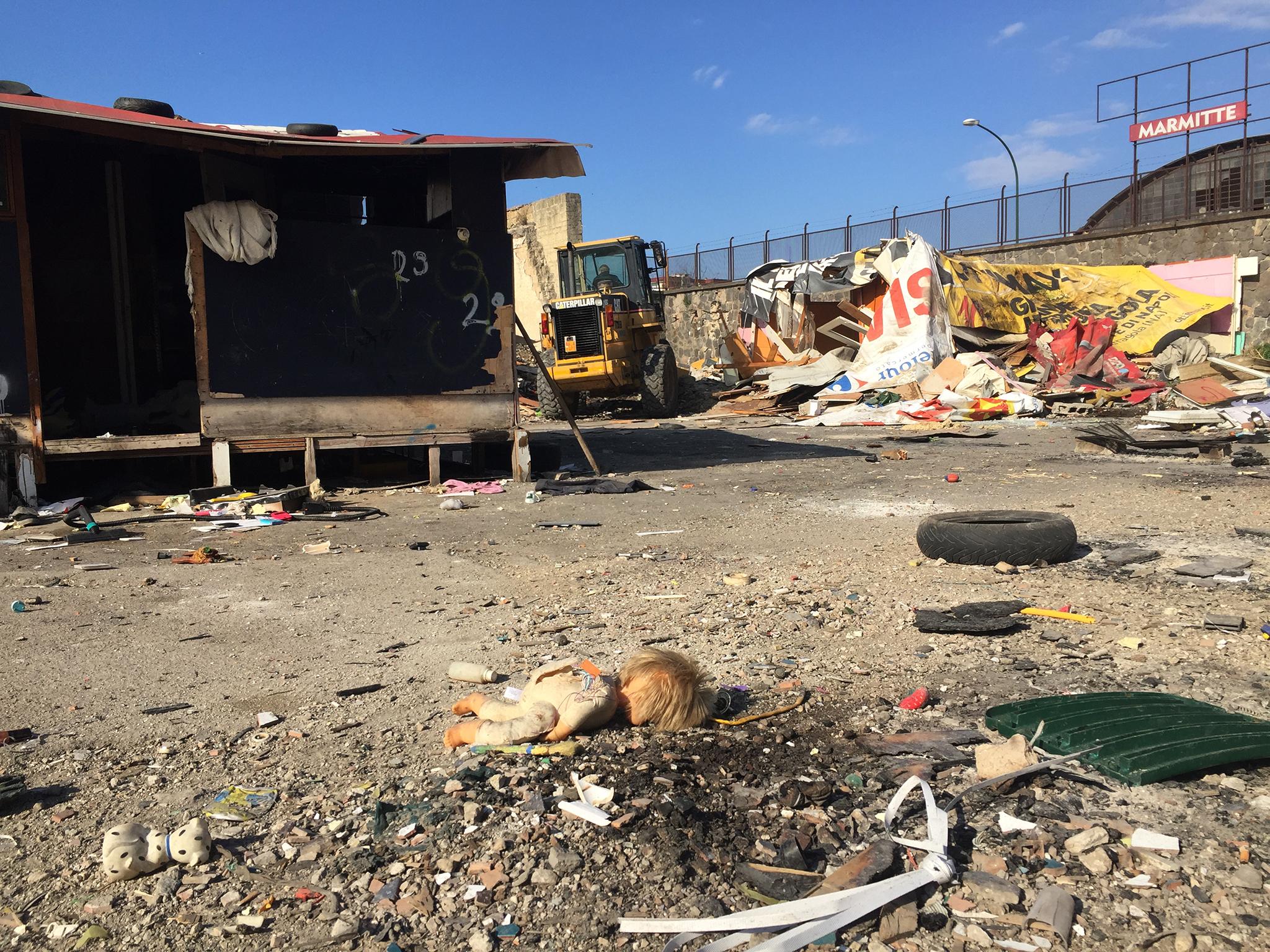
Meanwhile, 17-year-old Viorica and her mother fled to Forcella to seek refuge with relatives who were already living there. The mother and daughter now share a two-room home with five other people from an aunt’s family, and understand this situation must only be temporary before things become thorny and they outstay their welcome.
Conditions may have been squalid in Gianturco, but Viorica misses the life she had led there since she was 12. She is now isolated, and many members of her family have become separated – some have lost contact entirely.
She remembers, with desolation, the day the local authorities came to evict them and describes how it made her feel like the country she had considered her home for the past nine years no longer accepted her. “I was feeling very bad,” Viorica says. “It was hard to believe that we had to leave that place. After five years, you can imagine. It was a very ugly thing, what they did to us. I got scared a bit, it all felt somehow strange.
“They came and they told us to get out, because we could not stay there, they said that this was not a place for us. I felt like they meant not just Gianturco, but that this place, Napoli, Italy was not for us.”
Gheorghe, 45, also says the eviction highlighted the disparities between his race and the Italian nationals. He made his way to another informal Roma settlement in a neighbouring area and will stay there for as long as he can under one small roof with his wife, eight-year-old daughter, 19-year-old son, daughter-in-law and 10-month-old grandson.
But he is excruciatingly aware of the fact that this is no way to live permanently and raise children. “This is not normal,” he admits. “We should be in the same street with the Italians in a neighbourhood, but we are not.
“We are on the outside. If we had a permanent home we could get our kids to school and we can go to work, the same as everybody else is doing.”
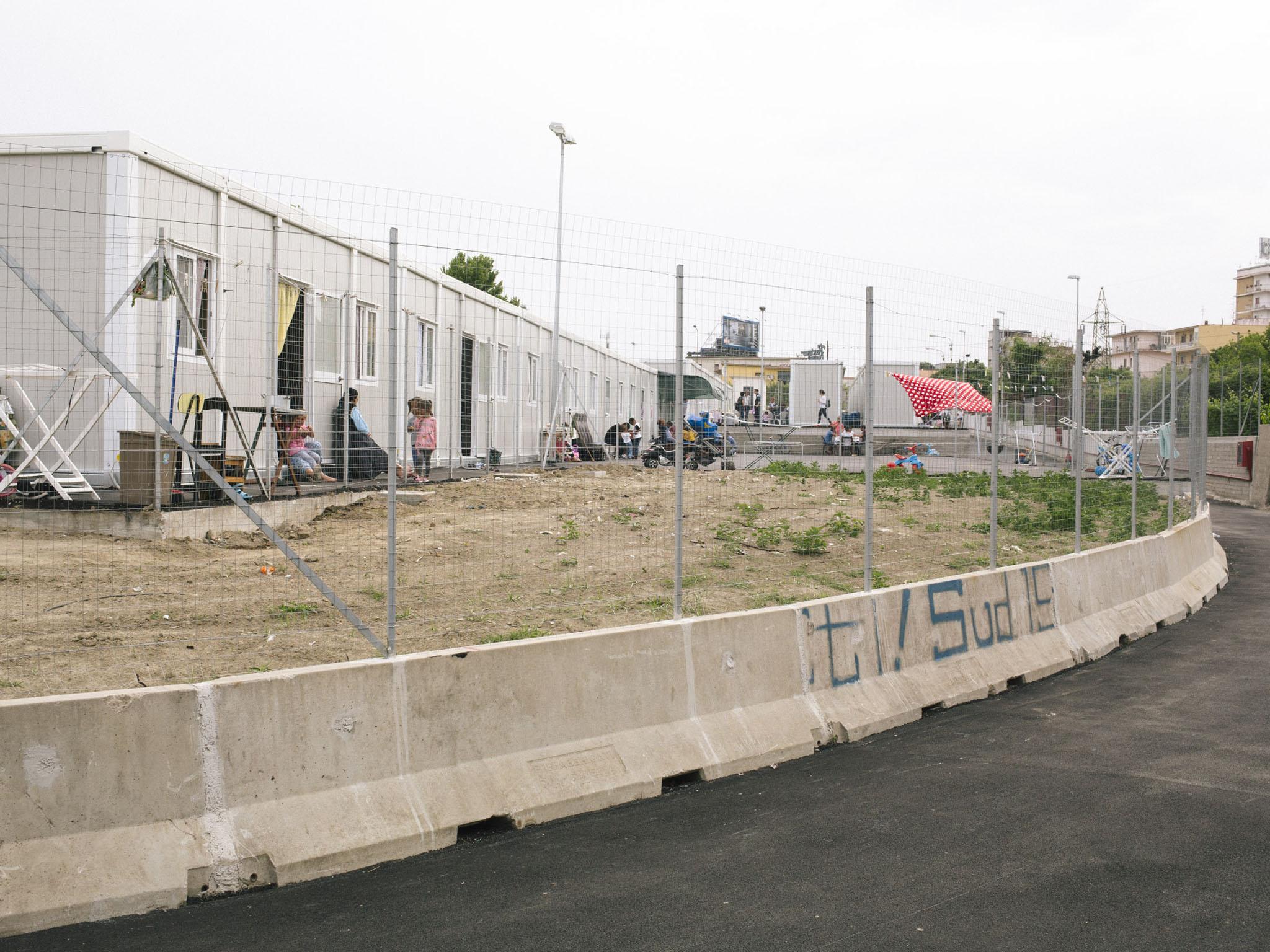
Other families from Gianturco travelled to Romania,where many originally descended from descended decades ago, and a number simply disappeared and become invisible, according to Amnesty International.
But a small minority, just some 140 people, was rehoused in a state-sponsored, heavily fenced-off and guarded container park in Via del Riposo.
Sandwiched between a multi-storey cemetery, six-lane motorway and an airport, this is an ostensibly temporary solution to a long-established social housing crisis. Noticeably, the next nearest residential buildings are at least a 15-minute walk away.
The perimeter brick wall surrounding this emergency housing reveals an even more worrying aspect to this story, and exposes the extent of the hostility faced by the estimated 170,000 Roma and Sinti living in Italy.
It is marred with brazenly racist graffiti that threatens Roma people specifically with death and the firebombing of their homes – a warning that would be irresponsible to dismiss, given that this development stands on the site of a previous Roma settlement that was burned down by arsonists in 2013.
And just last month, three Roma sisters, aged four, eight and 20, died when their camper van home became overwhelmed by flames as they slept after it was torched by attackers on the outskirts of Rome.
Notwithstanding, the select few chosen ones living inside this clinical ghetto, with its sterile, flat-pack-style, grey-corrugated metal-walled dwellings, are the envy of those who are left outside.
A formal, pre-authorised appointment was required to gain access to the camp, but once inside it is clear to see that a sense of community is flourishing within the imposingly high fences. Some of the adults also have access to work – one works in a local bakery – while many of the children have places in nearby schools.
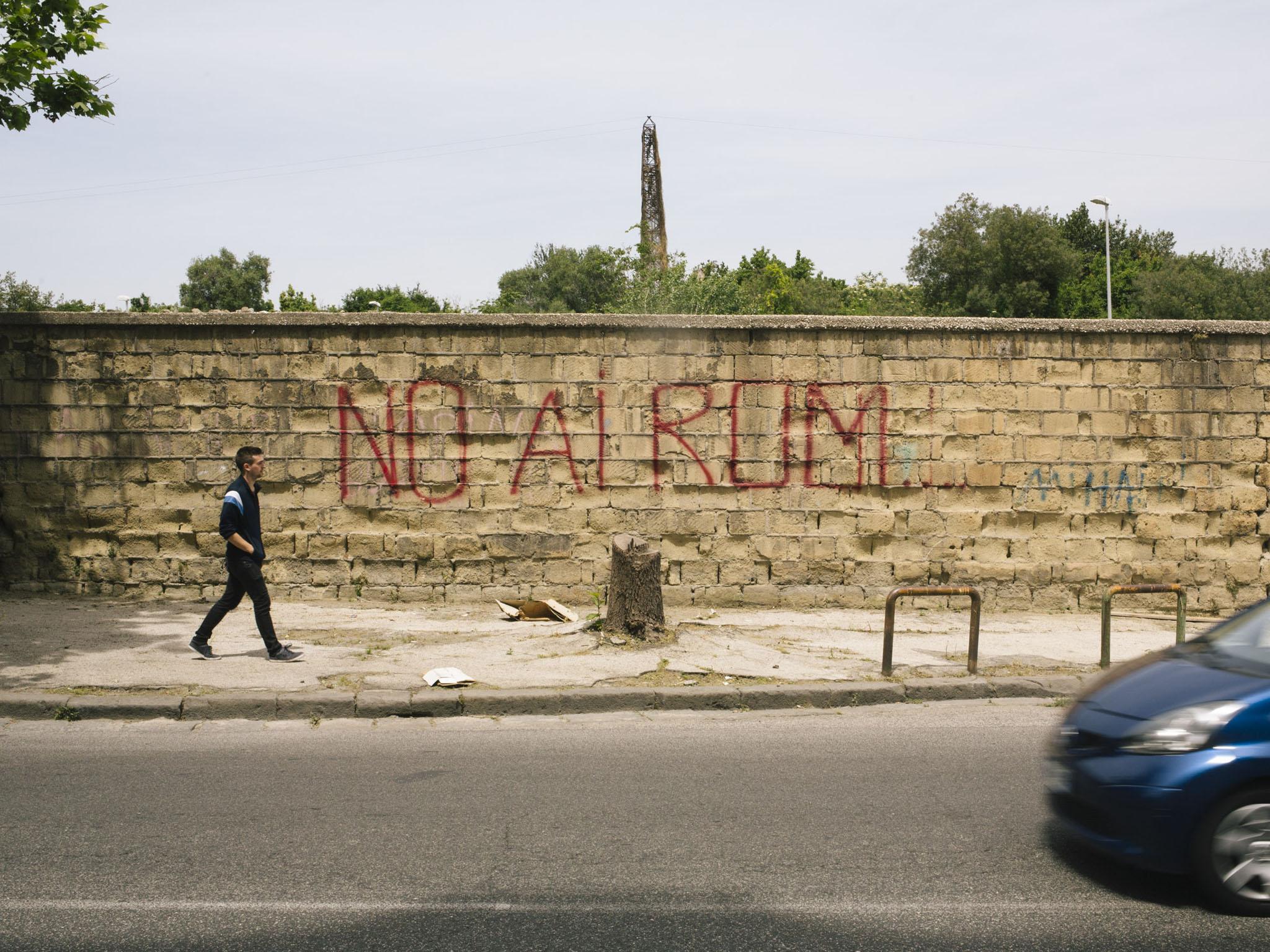
Abiade, 22, lives in the container park with her partner and four children in a small, two-room unit yet appears grateful for their new home. “It’s very safe; we have no problems here,” she says. “My children can all go to school. It’s very important for the camp that the children go to school.”
Her six-year-old daughter, Maria, exuberantly interjects, “I am the best in my class. And my brother is also a good scholar.”
Other residents are a little more reticent, and it is difficult to gauge the true feelings they have towards their circumstances. A couple of men in their late 30s, when I ask if they are willing to be photographed, suggest speaking to a man they refer to as “Capo” – Vincenzo Esposito, a social worker for Roma and Sinti, who has been sent by the local municipality to escort the visit.
It is difficult to figure out why they feel the need to relinquish their right to either agree or disagree, and instead put this decision in the hands of a proxy.
Local activists have also been vocal about their concerns over the camp, and fear the situation could take a worrying turn if the residents are not provided with a long-term solution and properly housed.
Andrea Belfiore, a project coordinator with medical organisation Emergency, says: “I’m quite apprehensive about infection and what could happen during the summer when the temperature rises.
“When you get a lot of people living in a small place with little open space and no air conditioning, diseases can be passed on really easily, especially if you have say a baby with measles, for example. And in general Roma don’t have proper healthcare assistance.”
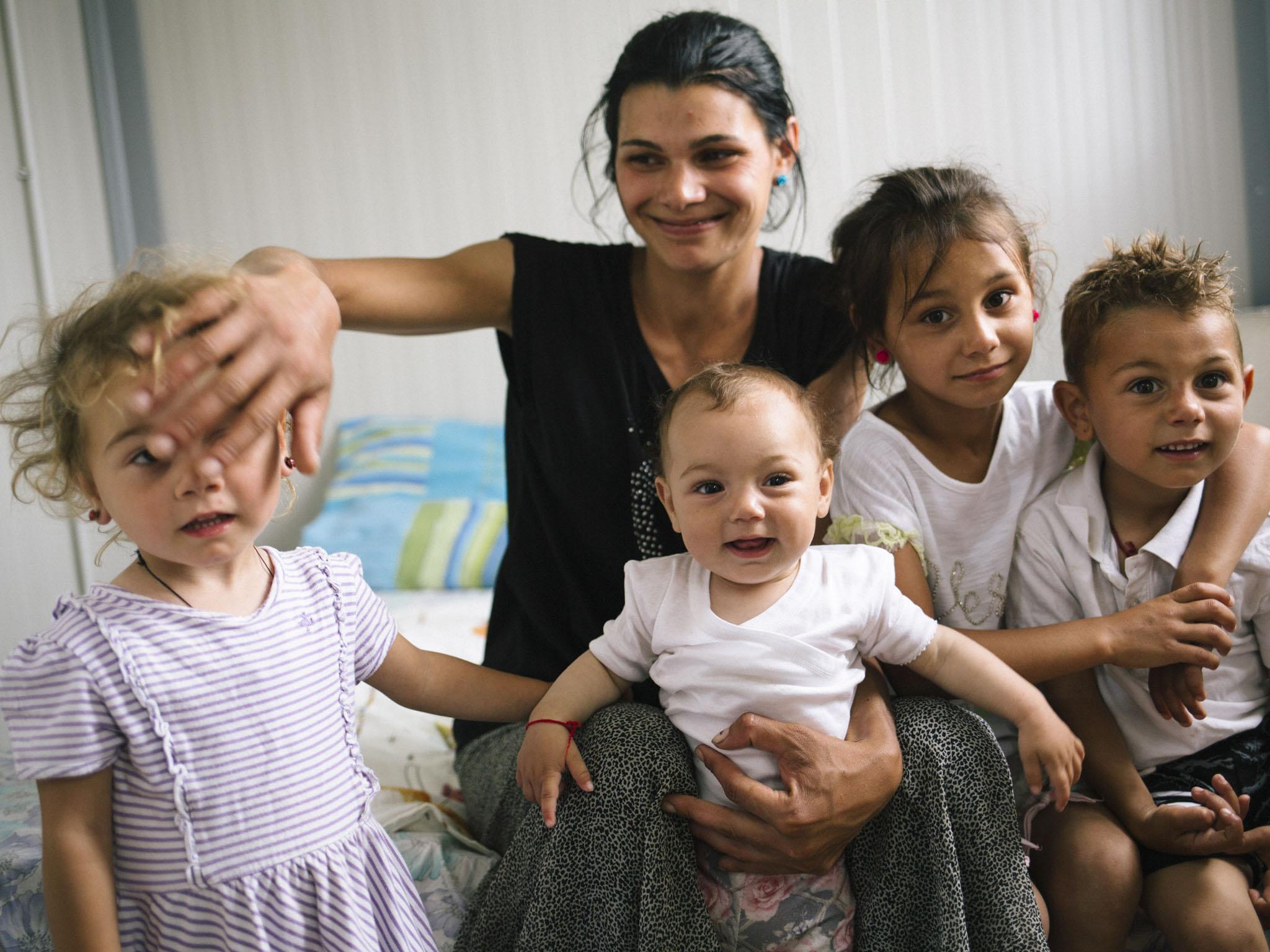
But Esposito says life in the development is “very peaceful” and there is a waiting list of families still hoping to get a coveted place here. However, these are exclusively Roma people and no other ethnicity in need of housing is asking to be moved to Via del Riposo. “The non-Roma do not want to be put in this camp,” Esposito explains.
He also says the town councillor has proposed to paint a mural on the boundary walls to cover the hate speech, which he insists is old and not a recent and immediate threat – a fact that only makes it more difficult to fathom why it has been left there as the Roma families move in, and many are forced to walk past it daily when taking their children to school.
The severance from wider society that the walled community borders create for the residents has attracted stern reproach from human rights organisations.
Amnesty launched a public campaign pushing for Italian authorities to urgently initiate a consultation with the Romani families in the ghetto, in order to develop sustainable housing plans that comply with international and regional human rights standards and are consistent with Italy’s National Strategy for Roma Inclusion. The call has already gathered nearly 15,000 appeals, that have been sent to the local municipality and the Italian Interior Minister.
The ERRC, meanwhile, says the new development essentially amounts to racial segregation and is currently building a legal case against it. “This is happening all over Italy,” Lee says. “The country’s solution to dealing with disadvantaged Roma is to bulldoze their homes and block access to work.
“Their solution to the housing crisis is to place these Roma in ethnically segregated container camps where they control their lives. Italy is systemically, on a national level, infringing the human rights of its Romani minority. We are currently building a case around the new camp at Via del Riposo, which we find to be discriminatory. Authorities should place these people in ordinary, integrated social housing – not an ethnically segregated container camp.”
His claims, it appears, are not unique. In April, the Financial Times reported that the European Commission has so far hesitated in publishing a document that recommends Italy faces sanctions for mistreatment of Roma in housing policy.
Brussels opened a preliminary investigation into the country almost five years ago, but no infringement proceeding has been launched – allegedly because of fears within some quarters that it could fray yet further relations between Italy and the EU.
“The Commission is monitoring the situation concerning Roma housing in Italy and is in contact with the Italian authorities on this matter,” a Commission official tells The Independent. “The European Commission works closely with member states to fight discrimination and advance the social and economic inclusion of Roma through financial support, policy advice and other tools. Infringements are one of the different tools that can be used, depending on the specific situations.”
But Amnesty International is calling on Brussels to take immediate action. “It is time for the European Commission to stop paying lip service to Roma rights and take meaningful action to end the shameful discrimination and segregation against Roma in Italy,” insists Catrinel Motoc, the NGO’s regional campaigner on discrimination.
“Thousands of Romani families, forced to live in poor conditions in segregated camps, have waited almost five years for the Commission to complete its investigation into Italy’s discrimination against Roma and finally launch an infringement proceeding against the country.
“In that time, hundreds of forced evictions have taken place with men, women and children thrown out of their homes without genuine consultation or compensation and with nowhere to go, just like in the case of Gianturco.”
However, it can’t be ignored that Italy is already grappling at the frontline of some of Europe’s most complex and urgent humanitarian problems.
Indeed, the escalating refugee crisis alone is a considerable challenge, with a total of 181,000 migrants reaching the country from Libya last year, and estimates suggesting that 21,900 migrants arrived in the first three months of this year – up from 14,500 in the same period in 2016.
And Italy’s own citizens face hardship amid high unemployment, which currently sits at 11.1 per cent, and the highest public debt in the Eurozone after Greece – about 132 per cent of GDP.
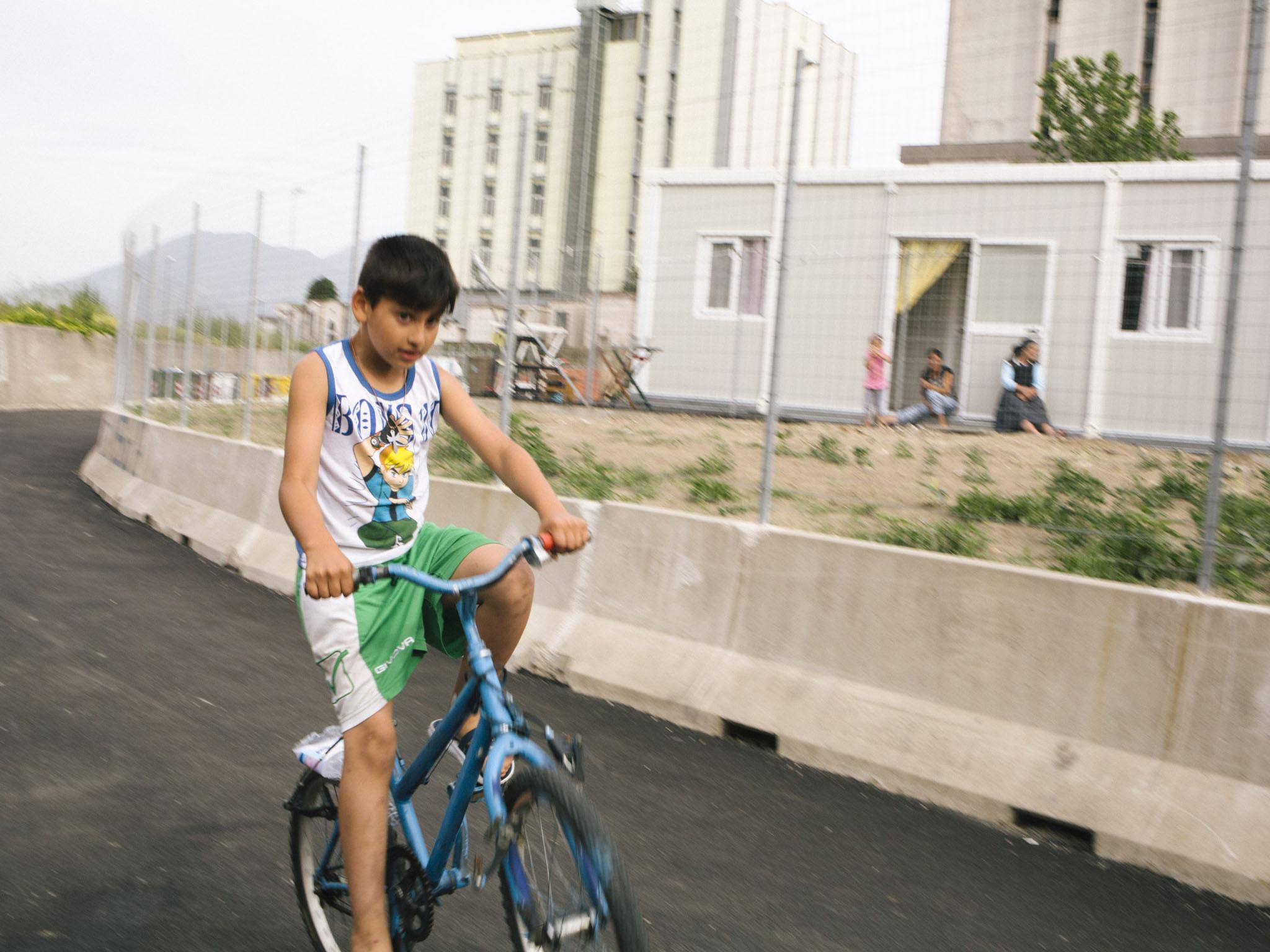
And it is partly the impact of these factors that leaves a bitter taste in the mouths of Italian locals who have witnessed the formation of the new container park in Via del Riposo. Jordano, who runs a nearby shop and bar, says: “They come in here and they buy coffee, so they are good for business. They don’t cause any problems, things are calm and everyone gets on with his own business.”
“Look,” he continues, “Naples is a poor city with many problems; we have high unemployment, poverty and criminality. If you give these people free accommodation but not others it will create tensions.”
The former Gianturco residents make it clear that they are not after handouts from the Italian government; they only want to be able to put down roots in safe spaces where they can raise their families and develop some level of cohesion with the wider community.
Gheorghe, in particular, is anxious that it won’t be long before his family is again forced to up sticks, creating yet more instability and distress. He wants only a more sustainable future for his family.
“We would not like something with luxury conditions,” he pleads. “We would just like to have a place where we do not have to leave all the time. We have always had someone asking us to leave, telling us to move on. We can build our own homes; we do not need anyone to do it for us.
“They have made those 26 or so houses at Via del Riposo and they pretend they are doing something for everybody, but look where we are. They destroyed our homes and won’t let us settle anywhere. We do not want government containers, just somewhere we can live in peace.”
The Italian authorities did not respond to a request for comment.
Join our commenting forum
Join thought-provoking conversations, follow other Independent readers and see their replies
Comments